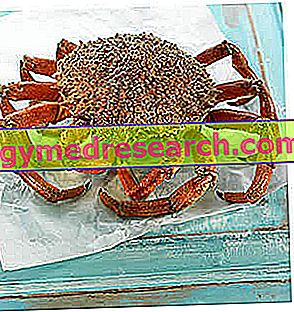Generality
Hirsutism therapy must act substantially on two levels: hormonal and aesthetic.
Of course, the type of treatment to be performed will depend strongly on the cause that caused hirsutism, as it may depend on the patient's general state of health.

After a careful diagnosis and a careful evaluation of the causes triggering the disorder, the doctor will prescribe the treatment that best suits each patient.
Pharmacological therapy
The pharmacological therapy of hirsutism must be strictly prescribed by the doctor and depends on the factors that caused it.
Depending on the case, drug therapy can be used either alone or in association with other treatments (surgery, treatments, aesthetics, etc.).
Hirsutisms due to androgenic hormone producing tumors, both of the ovaries and of the adrenal cortex, require surgery, whether or not associated with chemotherapy (anticancer drugs).
Those due to non-tumor adrenal pathologies are to be treated with cortisone, whether or not associated with anti-androgen drugs, such as cyproterone acetate or aldactone. Cyproterone acetate is more often associated with an estrogen, which can be ethinyl estradiol or 17-beta-estradiol.
Since other forms of hirsutism are linked to an excessive production of androgens associated with a persistent ovulation-free condition, drug treatment aims to interrupt this permanent situation. In patients who want a child, drugs capable of inducing ovulation must be used, while in all other women it will be appropriate to use drugs that suppress the synthesis of androgenic hormones by inhibiting LH.
Generally, at least 6 months of treatment are needed to judge the effectiveness of the drug. When improvement occurs, this can last indefinitely or hirsutism, after an initial reduction, can stabilize.
Finally, the simultaneous use of mechanical methods for hair reduction, especially electrocoagulation, can accelerate the success of drug therapy.
It should also be borne in mind that, with the therapies currently available, hirsutism can be reduced but not eradicated.
Among the various hormones available for the treatment of hirsutism, the most used are those able to suppress the various sources of androgen production.
Those that inhibit androgens produced at the level of the ovaries are oral contraceptives (pill), progestogens (including medroxyprogesterone acetate), GnRH agonists, antiandrogens (cyproterone acetate, spironolactone, drospirenone, Casodex, RU58841), ketoconazole and corticosteroids (corticosteroids).
Those that inhibit androgens produced at the level of the adrenal cortex are cortisone, oral contraceptives, spironolactone, ketoconazole.
Those that inhibit the androgens produced at peripheral level are: cyproterone acetate, spironolactone, cimetidine, glutamide, estradiol or progesterone in ointment, oral contraceptives and 5-alpha reductase inhibitors (Finasteride).
To learn more, read: Medications to treat irsutism »
Diet and Hirsutism
Effects of diet on hirsutism
Insulin is known to stimulate the ovarian secretion of androgens.
A therapeutic intervention that includes a change in eating habits and an increase in physical activity should be beneficial.
The effects of the diet on plasma androgen levels have not yet been determined exactly. However, it has been shown that in obese patients with insulin resistance, the reduction in the amount of calories introduced with food, and the consequent weight loss, improves the severity of hirsutism. This is because, with a balanced diet, insulin secretion is reduced.
Even a change in the type of food can change the metabolism of carbohydrates and the amount of androgens produced. For example, a diet containing a high amount of simple carbohydrates stimulates the production of insulin to a greater extent than a low-calorie diet rich in complex carbohydrates. A diet rich in vegetable fibers and complex carbohydrates can reduce insulin secretion, and consequently decrease the ovarian production of androgens. This hypothesis, however, requires further verification.
In obese subjects, exercise reduces the severity of insulin resistance and decreases the amount of insulin produced. Exercise may decrease androgen production by decreasing blood insulin levels.
The few published studies on the effects of weight loss in patients with polycystic ovaries indicate that weight loss increases the frequency of ovulatory cycles or at least increases the frequency of ovulatory cycles.
Beauty treatments
Hormonal therapy of hirsutism acts primarily by inhibiting the growth of new hair. A beauty treatment is essential to eliminate the pre-existing hair.
Galvanic electrolysis, short-wave diathermy or the use of both, are the only methods that allow the definitive removal of the hair. More than 90% of patients improve after treatment.
However, this should begin only after the hyper-production of androgens has been reduced or their peripheral action blocked, after two or three months of hormonal therapy.
Galvanic electrolysis exploits the action of an electric current to favor the production of sodium hydroxide which will then lead to the destruction of the hair follicle.
Shortwave diathermy is carried out in a similar way to electrolysis, but in this case, the action of an alternating electric current is exploited at low wavelengths (therefore, at high frequencies).
This latter technique is performed without anesthesia or local infiltration of lidocaine (a local anesthetic). In delicate areas such as the lips and the face a mixture of two local anesthetics (lidocaine and pilocarpine) can be used. In this mixture, the anesthetics are very concentrated and spread through the skin.
On the area of the face to be treated, 5 grams of this mixture of anesthetics are spread and the area is covered with a bandage before starting the treatment.
In some cases, it is possible to exploit both these techniques to contrast hirsutism from an aesthetic point of view, in such a way as to obtain minor results.



